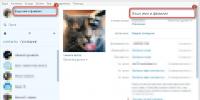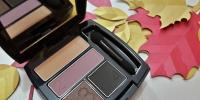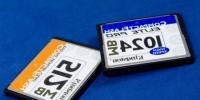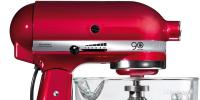How to rinse your mouth with chlorhexidine to treat inflammation of the throat
Chlorhexidine is a potent multi-purpose antimicrobial drug widely used in many medical applications and for throat gargling.
The product has the advantages of being used in the treatment of diseases over many analogues, as well as contraindications, therefore, before use, it is imperative to familiarize yourself with the cases in which this drug is prescribed in the treatment of colds and throats, is it possible to rinse your mouth with chlorhexidine, is it safe for children and pregnant women?
The drug with the main active ingredient - "chlorhexidine bigluconate" is represented by several dosage forms:
- aerosol;
- candles;
- gel;
- alcohol solution;
- water solution.
Forms have different concentrations of the main component: from 0.016% to 20%. This tool is a powerful antiseptic, its action is directed against fungi, bacteria, protozoa, viruses, microbial spores. It also actively fights Trichomonas, Treponema, Gonococcus.
The principle of action is based on the fact that the active substance of the drug destroys the cell wall of bacteria, which leads to their death. Chlorhexidine is used as an external, vaginal agent and for rinsing the mouth.
Application area
- disinfection of the injection and surgical field;
- processing of surgical equipment and instruments;
- treatment of gynecological and venereal diseases;
- washing burns, wounds;
- rinsing the mouth with a solution of "Chlorhexidine" during dental and ENT procedures;
- skin care after cosmetic interventions.
Chlorhexidine solution for sore throat and other throat diseases
The drug is prescribed for the treatment of inflammatory processes in the throat. Since it actively and successfully destroys all types of bacteria that cause tonsillitis, laryngitis, pharyngitis and other diseases of the pharynx and throat.
 Most people who have experienced sore throats know whether it is possible to gargle with chlorhexidine. This is no accident - the drug has been produced for a long time and is an effective antiseptic.
Most people who have experienced sore throats know whether it is possible to gargle with chlorhexidine. This is no accident - the drug has been produced for a long time and is an effective antiseptic. For these purposes, an antiseptic is used in the form of an aqueous solution, which is necessary to gargle. Once in the oral cavity, the agent not only fights the source of infection, but also forms an invisible film, creating a kind of barrier on the mucous membrane for further infection.
The rinsing procedure is carried out according to the plan:
- Use a solution containing the active ingredient - no more than 0.2%.
- If the solution was stored in the refrigerator, it must be warmed up before the procedure so that the temperature of the product is close to body temperature.
- The solution for one rinse will need 15-20 ml.
- Gargle for 20-30 seconds, then spit out the liquid.
- Do not eat or drink for 2 hours after rinsing.
- During the day, the procedure is carried out 3-4 times.
You can also rinse your mouth with chlorhexidine with purulent sore throat. But in this case, the presence of pus on the tonsils reduces the effect of the antiseptic.
Therefore, before the procedure with the use of the drug, it is necessary to rinse the throat with plain warm water. This will ensure the removal of pus, therefore, improve the access of the drug to the focus of inflammation.
Use of chlorhexidine rinse for dental purposes
A solution of 0.05 - 0.1% is recommended to rinse your mouth with gingivitis, stomatitis, periodontitis. Before the procedure, you need to brush your teeth with toothpaste. Rinse your mouth thoroughly with water to remove any remaining cleaning agent.
Attention! You can not use "Chlorhexidine" in conjunction with soap and toothpaste. The components of these products deactivate the action of the antiseptic.
In case of inflammation of the gums, the rinsing procedure is performed similarly to the procedures that relieve ENT diseases. The course of treatment will be from 5 to 10 days, 3 procedures per day.  If a tooth was removed, in the next 3 days, not intensive rinses are prescribed, but baths. They differ from rinses in that the liquid in the mouth must simply be kept concentrated in the problem area. At the same time, without making any movements, then spit out the solution.
If a tooth was removed, in the next 3 days, not intensive rinses are prescribed, but baths. They differ from rinses in that the liquid in the mouth must simply be kept concentrated in the problem area. At the same time, without making any movements, then spit out the solution.
This method will ensure not only disinfection, but also the speedy healing of the tooth socket. A blood clot is formed in it - a kind of protection against the penetration of pathogenic microflora into the wound. Rinsing provokes the washing out of this clot, which threatens to bleed and become infected.
Baths are done as needed, but not more than 4 per day, the duration of each is up to 30 seconds.
3 days after the dental operation, you can rinse your mouth with Chlorhexidine using a 0.05% solution. Each procedure for treating the mouth with an antiseptic should last no more than 1 minute. In total, they are carried out 3-4.
Pay special attention! When rinsing the mouth, it is necessary to take into account the temperature of the solution - it should not exceed 36-38 degrees. Hot liquid exacerbates the abscess, cold - vasoconstriction.
It can also be used for bad breath. To do this, rinsing is carried out with a specially prepared liquid: a few drops of food mint flavoring are added to a small amount of a 0.1% solution.
Swallowing the solution
Doctors warn that gargling with this remedy must be done very carefully so as not to swallow a large amount of the substance, as it has a burning effect and can irritate the mucous membrane.
Be careful! Ingestion of the drug in large quantities is fraught with burns of the esophagus. 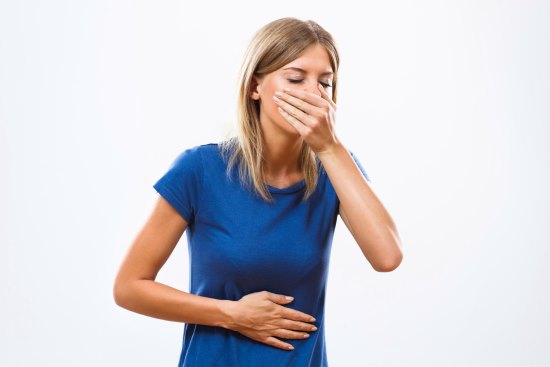 Chlorhexidine is poorly absorbed into the blood. Ingestion of the body does not threaten poisoning.
Chlorhexidine is poorly absorbed into the blood. Ingestion of the body does not threaten poisoning.
But an external antiseptic preparation, getting into the digestive tract, will actively act against bacteria there, destroying even those that are useful and necessary for normal life.
Such a violation of the microflora will lead to dysbacteriosis. A small amount of the substance from the intestine will come out with feces.
In case of accidental ingestion of more than 20 ml of the drug, it is necessary to do a gastric lavage. To do this, drink at least 1 liter of warm, salted water and induce vomiting by pressing on the root of the tongue. Then take activated charcoal tablets.
Rinsing for children
Rinse your mouth with "Chlorhexidine" for children under 5 years of age is contraindicated. The instructions for the drug indicate that the solution should be used from the age of 12.
The fact is that a child may accidentally swallow liquid during the procedure. Therefore, the rinsing procedure in children, even of school age, should be carried out under adult supervision.
And it is appointed by a doctor, and not at the request of the parents. Only a specialist recommends a safe dosage of the solution, the duration of a single procedure and the entire course. 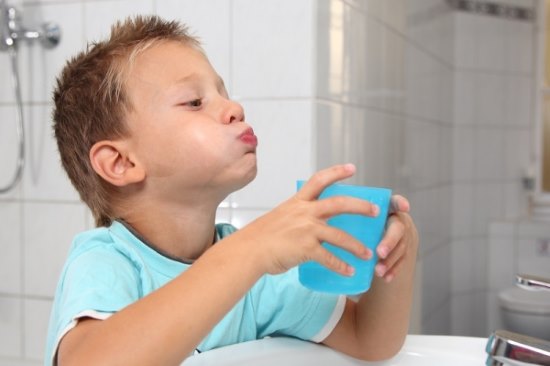 Usually the solution used for children should be 0.01%. For one procedure - 10 ml (1 dessert spoon) of liquid, up to 3 rinses per day.
Usually the solution used for children should be 0.01%. For one procedure - 10 ml (1 dessert spoon) of liquid, up to 3 rinses per day.
The use of an antiseptic is also practiced in children under 7 years old, but it consists only in wiping the tonsils and gums with a cotton swab dipped in Chlorhexidine.
The use of "Chlorhexidine" during pregnancy
Experts say that the drug does not have any negative impact on the body of the expectant mother. The substance cannot overcome the placental barrier, therefore, the access of the drug to the fetus is impossible.
Answering the question whether it is possible to rinse the mouth with "Chlorhexidine" for pregnant women, the answer will be positive. But when using the tool, you need to be careful.  Considering its actions inside the body, where the drug enters upon accidental ingestion, as well as side effects that manifest themselves with prolonged use of this medication, it should be noted that all these factors provoke a violation of the general well-being of mother and baby. This also applies to lactation.
Considering its actions inside the body, where the drug enters upon accidental ingestion, as well as side effects that manifest themselves with prolonged use of this medication, it should be noted that all these factors provoke a violation of the general well-being of mother and baby. This also applies to lactation.
The solution should be used by expectant and nursing mothers with the lowest concentration - 0.01%. The course is provided for up to 5 days, 2-3 procedures per day. If in any doubt, it is best to consult a doctor.
How to dilute the rinse solution
The pharmacy sells an aqueous solution of "Chlorhexidine" with a percentage of the active substance: 20%, 5%, 0.1% and 0.05%. The last two are completely ready for use, they do not need to be further bred.
If there are none, the necessary solution can be prepared independently. Take clean, better distilled water (or cooled boiled water) and add the required amount of chlorhexidine bigluconate.
Solutions of 5% and 20% are potent concentrates, they must be handled with extreme caution. The main thing is to calculate the mixing scheme as accurately as possible.
For the convenience of calculating the number of components of the solution, all data are given in the table:
| Percentage of available concentrate | The required percentage for 100 ml of Chlorhexidine solution, which can be used to rinse your mouth | The required number of components for the preparation of the solution | |
| Water | Available concentrate |
||
| 5% | 0,01% | 99,6 | 0,4 |
| 0,05% | 98 | 2 | |
| 0,1% | 96 | 4 | |
| 0,2% | 92 | 8 | |
| 20% | 0,01% | 99,9 | 0,1 |
| 0,05% | 99,5 | 0,5 | |
| 0,1% | 99 | 1 | |
| 0,2% | 98 | 2 | |
Contraindications and possible harm
Use the drug carefully, especially for the treatment of gums and throat. The antiseptic has side effects. Basically, they are associated precisely with an overdose and a high concentration.
Carefully! In no case should a Chlorhexidine solution containing more than 0.2% of the active substance be used for rinsing the mouth.
It is a mistake to believe that the higher the concentration, the more effective it is. Solutions of 0.5 - 1% are intended for external use. Once in the oral cavity, they threaten a severe burn of the mucous membrane.
Even if a solution of acceptable concentration is taken for rinsing, and a burning sensation is felt from it on the tongue, water must be added to the product, making it even weaker. 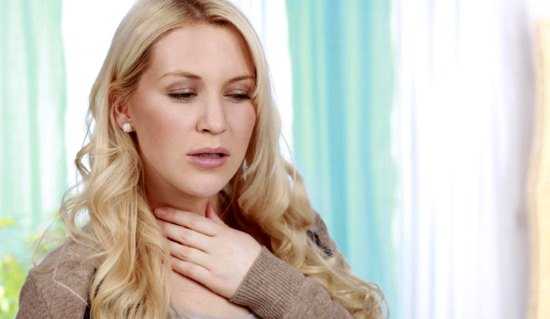 Prolonged use of the drug provokes:
Prolonged use of the drug provokes:
- persistent dry mouth;
- darkening of tooth enamel;
- sleep disorders;
- the formation of tartar;
- dulling of taste sensations;
- skin irritation;
- swelling of the salivary glands.
People with an allergic reaction "Chlorhexidine" is contraindicated, or it is prescribed individually.
Conditions of storage and dispensing from pharmacies
A prescription is not required to purchase the drug. Store Chlorhexidine solution for no more than 3 years in a dark place out of the reach of children.
When preparing the solution yourself, it is better to mix it in a small volume, keep it in a container with a tight lid.
Is it possible to rinse your mouth with chlorhexidine how to do it:
The effectiveness and use of chlorhexidine:

